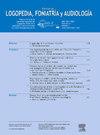小学生口头推论测试的验证
Q3 Nursing
引用次数: 0
摘要
差异能力是与复杂的阅读理解过程密切相关的技能之一。因此,重要的是要有一个测试来评估它,并帮助学生在这方面表现不佳。目的本研究旨在验证口语推理测试(OIT),该测试考虑了5种语用推理中的4种具有教学倾向。方法选取秘鲁利马和皮乌拉市三所学校的四、五、六年级学生213名,男生104名,女生109名。考试是集体进行的,题目由主考人大声朗读。结果OIT表现出足够的内部一致性,不因去除任何项目而改变。建构效度评估采用探索性因子分析,提出一个七因子模型。POI与其他阅读理解测验的相关性为中等,表明标准效度良好。结论OIT是评价小学生推理理解能力的有效、可靠的工具。该测试不受解码影响,便于应用。建议进一步研究更大、更多样化的样本,以确认该测试在不同教育背景下的适用性和优化。本文章由计算机程序翻译,如有差异,请以英文原文为准。
Validación de la prueba oral de inferencias en escolares de educación primaria
Background
Inferential ability is one of the most relevant skills that contribute to the complex process of reading comprehension. Therefore, it is important to have a test to evaluate it and assist students with low performance in this skill.
Objective
This study aimed to validate the Oral Inference Test (OIT), which considers 4 of the 5 types of pragmatic inferences with a didactic orientation.
Methods
The sample consisted of 213 students in 4 th, 5 th, and 6 th grade, 104 boys and 109 girls, from three schools in Lima and Piura, Peru. The test was administered collectively, and the items were read aloud by the examiner.
Results
The OIT showed adequate internal consistency, which was not altered by the removal of any item. Construct validity was assessed using exploratory factor analysis, suggesting a seven-factor model. The correlations of the POI with other reading comprehension tests were moderate, indicating good criterion validity.
Conclusions
The OIT proved to be a valid and reliable tool for assessing inferential comprehension in primary school students. The absence of decoding influence in this test facilitates its application. Further studies with larger and more diverse samples are recommended to confirm the applicability and optimization of this test in different educational contexts.
求助全文
通过发布文献求助,成功后即可免费获取论文全文。
去求助
来源期刊

Revista de Logopedia, Foniatria y Audiologia
Nursing-LPN and LVN
CiteScore
1.10
自引率
0.00%
发文量
28
 求助内容:
求助内容: 应助结果提醒方式:
应助结果提醒方式:


